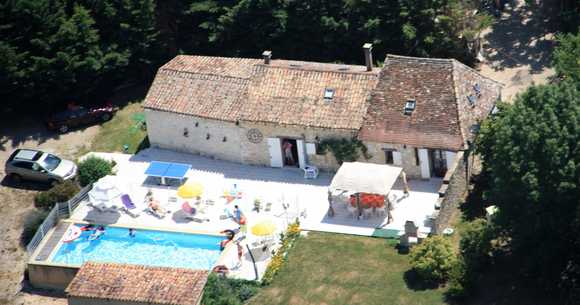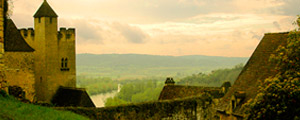
This attractive XVIIth century property in the countryside, set in 2 acres of grounds, on the edge of an old hamlet, has 6 bedrooms (sleeps 13), electric heating and a fenced private swimming pool.

The property is situated in Purple Périgord (Bergeraçois), on the verge of Black Périgord (Sarladais) and the Département du Lot et Garonne, 30 km south east from Bergerac, 20 km south from the Dordogne River, 3 km from Beaumont du Périgord (a XIIIth century bastide with all the necessary shops).
There are lots of opportunities in the region:
Many sites to visit: the most beautiful villages in France, castles, abbeys, vineyards, prehistoric sites, markets and flea markets, etc.
Sports to practise : hiking and mountain bike, horse-riding, golf, canoeing, water sports, tennis, pétanque, rock-climbing and caving, etc.
And last but not least, there is the local gastronomy (foie gras, Bergerac wines, goose/duck confits, ceps and truffles, etc).

Périgord
The Département de la Dordogne (with Périgueux as prefecture) corresponds to old Périgord, which is divided into 4 areas: White Périgord around Périgueux, mainly formed of limestone plateaux, Green Périgord, covered with forests and moor in the north, near to Limousin, Black Périgord, around Sarlat, which owes its name to the dark forests of oak, pine and chestnut trees, and Purple Périgord, the region surrounding Bergerac with its orchards and well-known vineyards.

After Paris, Dordogne is the French department that counts the highest number of historic monuments: not less than 1.000 castles! Numerous prehistoric sites show the presence of Cro-Magnon man (Lascaux 2 is the 3rd most visited site in France after Mont-St-Michel and Rocamadour).
Périgord, which became a county in the VIIIth century, was part of the Duchy of Aquitaine. It came under English sovereignty in 1152 when Eleanor of Aquitaine married Henry Plantagenet, who ruled England as Henry II. This boundary position between the two great kingdoms explains the presence in the region of lots of castles and bastides (or fortified villages built in the XIIIth century to protect the local population).

